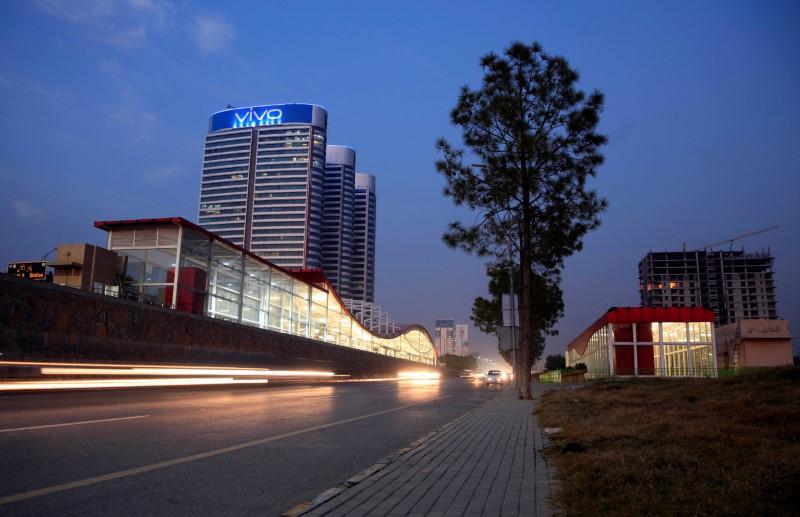
ISLAMABAD: The PTI government plans to achieve 7% annual economic growth rate by the end of its five-year term, which appears ambitious and will require changes in the current tight fiscal and monetary policies that it has adopted to stabilise the economy.
Federal Minister for Planning and Statistics Makhdum Khusro Bakhtiar on Monday chaired a meeting to review preparations for Pakistan's 12th Five-Year Plan (2018-23), according to a handout issued by the ministry. Planning Secretary Zafar Hasan and Joint Chief Economist Rai Nasir Ali were among the participants.
The Planning Ministry noted that current fiscal "consolidation period is expected to be over by next fiscal year and GDP growth will start picking up from the current envisaged at 4.2% to 7% during the final year of the five-year plan".
The Planning Ministry underlined volatile and declining growth and low Job creating ability of the economy as the key issues hindering economic growth. Low productivity and efficiency, lack of investment-conducive climate, and structural and macroeconomics are the other key impediments to sustained economic growth.
The meeting was apprised that the draft of the plan is ready which will be launched after approval.
Inflation is also projected to remain around 7%.
But Planning Ministry macroeconomic section chief Zafarul Hasan Almas told The Express Tribune that the macroeconomic projections were not yet finalised. "The five-year plan will be unfolded once the deliberations are over with all the stakeholders," he added.
Almas said the 7% annual economic growth rate projection for 2023 was just an initial assessment and draft of the five-year plan has not been finalised yet.
However, the Planning Ministry handout noted that the average economic growth rate for the 2018-2023 period is projected at 5.8%. This is slightly higher than the average 4.8% economic growth rate that the PML-N government had achieved during its 2013-18 term.
The Planning Ministry's initial assessment for the next five years shows that the economy could grow at a rate of 4.2% in this fiscal year, which will pick to 5.4% in the next fiscal year. For 2020-21, the assessment shows the annual economic growth rate at 6%, which will then pick to 6.5% and ultimately reach 7% by the end of the fiscal year.
Reaching 7% annual economic growth would not be an easy task given the tight fiscal and monetary policies that the PTI government has adopted to stabilise the nose-diving economy. Since July, the central bank has increased the interest rates by 4.25%, setting it at 10%. The currency has been devalued by 15.4% in the past six months while heavy taxation has also been introduced.
All this will slow down the growth rate and make it extremely difficult for achieving the 7% target. The economy also faces serious external sector challenges.
But Zafar ul Hasan Almas said that once the economic fundamentals are strengthened, the government may provide economic stimulus to sustainably achieve the desired economic growth rate.
The Planning Ministry's initial assessment of the annual economic growth rate for the next five years is slightly higher than what the Ministry of Finance has shared with the International Monetary Fund, said sources.
They said that the Finance Ministry's working suggested that economy may grow at only 3.9% rate in the current fiscal year, which will pick to 4.3% in the next fiscal year. It has projected a 4.8% growth rate for 2020-21, 5.3% for 2021-22 and 6% for 2022-23, which is the last year of the PTI's five-year term.
The PML-N government had achieved 5.8% economic growth rate in its last year in power but the PTI believes that it was deficit-financed growth that created serious structural problems for Pakistan's economy.
Different studies show that Pakistan needs an annual 7% economic growth rate to absorb the youth bulge entering the market every year.
The Planning Ministry handout noted that Khusro Bakhtiar appreciated the macroeconomic framework prepared by the Planning Commission of Pakistan. The framework is based on a consultation process involving all stakeholders including civil society, media, the private sector, and above all the provinces, it added.
The minister was apprised that the plan aims at achieving 5.8% GDP growth on average during the plan period 2018-23. This growth has been projected on the basis of 3.6% growth in agriculture, 6.1% in industry and 6.8% in the services sector on average during the five years.
The proposed key objectives of the 12th five-year plan are inclusive and sustainable growth, strengthening the fundamentals of the economy to sustain growth momentum for a longer period, rural transformation, industrial development especially SMEs, Private Investment and Competitiveness, Clean and Sustainable Energy and improving productivity. Achieving Sustainable Development Goals to ensure social sector growth and improving governance are other key objectives.
In line with the government's vision, the emphasis during the plan period will remain on social sectors, poverty alleviation, job creation and improvement of governance for ensuring transparency and overcoming corruption, according to the Planning Ministry.





















































COMMENTS
Comments are moderated and generally will be posted if they are on-topic and not abusive.
For more information, please see our Comments FAQ